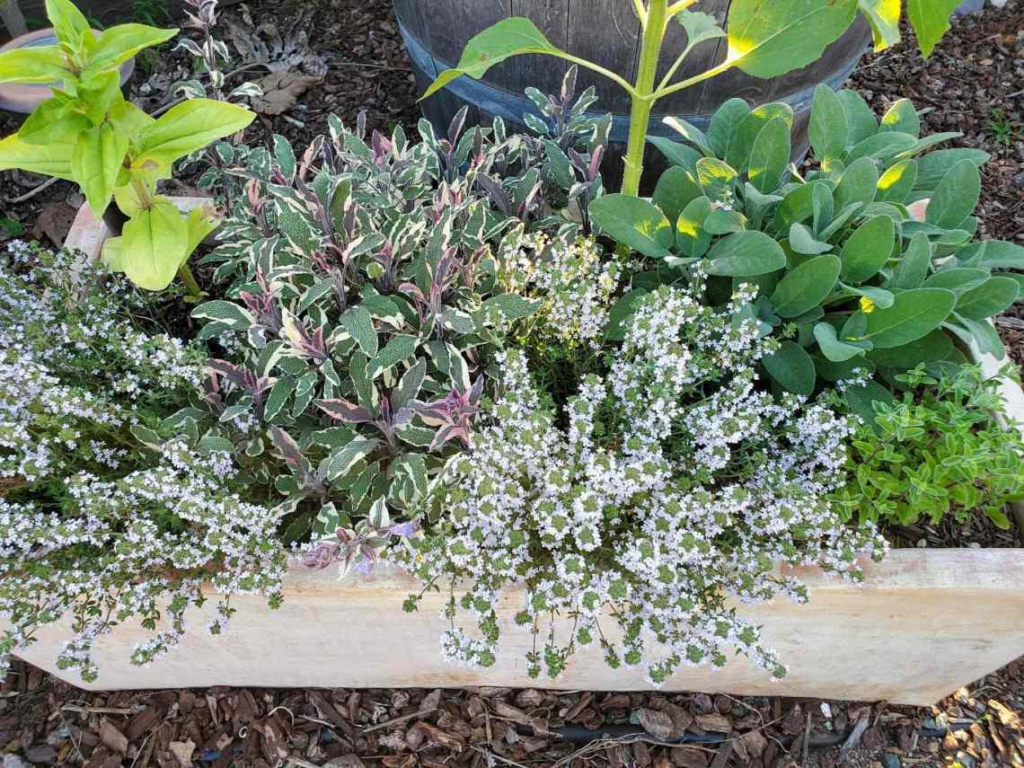For beginners, starting a herb garden from the beginning may be a gratifying and satisfying experience. It not only provides fresh and fragrant herbs for cooking and other applications, but it also adds beauty and variety to your outdoor or interior space. Here’s a step-by-step guide to starting and caring for your herb garden.
Table of Contents
Step 1: Select a Location
The first step is to decide where you want your herb garden to be. Herbs require a lot of light, so find a location that gets at least six hours of direct sunlight per day. If you’re growing herbs inside, select a sunny windowsill or invest in grow lights to ensure adequate light. Also, ensure that the location has adequate drainage and is easily accessible.

Step 2: Select the Herb Types
The following step is to decide what kinds of herbs you wish to grow. Choose herbs that you commonly use in your cuisine or that have additional benefits, such as medicinal or aromatherapy. Basil, parsley, thyme, oregano, mint, and rosemary are some common herbs for novices. When choosing herbs, consider their size and growth habits, as some can grow quite large and may require more space.

Step 3: Soil Preparation
After you’ve decided on your herbs, it’s time to prepare the soil. Herbs prefer soil that drains easily and is high in organic matter. You can buy potting mix or make your own by combining equal parts compost, perlite, and peat moss.
To increase soil structure and fertility, loosen the soil and amend it with compost or aged manure if you’re planting directly in the ground.
Step 4: Sow the Herbs
It’s now time to plant the herbs. Choose containers that are at least 6 inches deep and have drainage holes at the bottom if you’re growing herbs in pots. Fill the pot halfway with dirt, leaving approximately an inch at the top open, and plant the herb seedlings or seeds according to the planting depth and spacing directions. After planting, thoroughly water the herbs. If you’re planting herbs in the ground, make holes twice as big and deep as the herb plant’s root ball. Backfill the hole with soil and gently press down around the plant to remove any air pockets. After planting, thoroughly water the herbs.

Step 5: Fertilize and Water
Water the herbs regularly after planting to keep the soil moist but not soggy. Herbs grown in containers may require more frequent watering since they dry out faster than those grown in the ground. Overhead irrigation should be avoided since it can increase fungal illnesses. Instead, water the plant from the bottom. To supply the necessary nutrients for growth, fertilize the herbs every four to six weeks using a balanced fertilizer or organic compost. Herbs do not normally require substantial feeding, therefore avoid over-fertilizing, which can result in lanky growth and diminished flavor.
6th Step: Prune and Harvest
Pruning and harvesting your herb garden regularly can encourage bushy growth and keep the herbs from growing too lanky or woody. Pinch off the plant tips regularly to promote branching and avoid flowering, which can diminish the flavor of the leaves.
Harvest the herbs regularly, preferably in the morning when the oils are at their peak. Snip off the top leaves with sharp scissors or pruning shears, leaving at least two-thirds of the plant intact. Harvesting more than one-third of the plant at a time might weaken and impair the plant’s vigor.
Herb Growing Instructions
Each herb has its own growing and care requirements. Here are some growing tips for some of the most popular herbs:
Basil likes warm weather and lots of sunlight. Pinch off the plant’s tips regularly to encourage branching and avoid flowering. When the leaves are young and tender, harvest them.
Parsley enjoys chilly temperatures and moderate shade. Parsley can not tolerate drought, so keep the soil regularly moist. Harvest the outer leaves regularly, leaving the interior leaves alone.
Thyme thrives in broad light and well-drained soil. Thyme favors drier soil, so avoid overwatering. Trim the plant regularly to keep it from growing too woody.
Oregano prefers full light and well-drained soil. Pinch off the plant’s tips regularly to encourage branching and avoid flowering. For the finest flavor, harvest the leaves before the plant blossoms.

Mint: Mint prefers moderate shade and soil that is regularly hydrated. Mint may quickly expand and take over other plants in the garden, so keep it contained. For the finest flavor, harvest the leaves before the plant blossoms.
Rosemary prefers full light and well-drained soil. Because rosemary prefers drier soil, water it deeply and infrequently. Pruning the plant regularly will encourage bushy growth.
Conclusion
For beginners, starting a herb garden from the beginning may be a pleasant and rewarding experience. You may develop a beautiful and fragrant herb garden that supplies fresh herbs for cooking, aromatherapy, and other applications by finding a sunny area, selecting the proper herbs, preparing the soil, planting, watering and fertilizing regularly, pruning and harvesting periodically, and maintaining the garden. Keep a watch out for pests and illnesses, and give each herb the attention it deserves. Your herb garden will thrive with a little patience and care, providing you with a plentiful crop.
